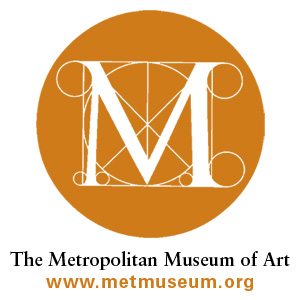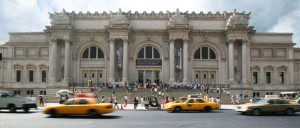by David Heyman


Being an artist and avid art lover, as well as working with the presentation, matting and preservation of artistic creations in my capacity at Oak Creek Printworks, it was with great anticipation that I planned my first trip to the Metropolitan Museum of Art in New York City.
A great way to gauge the size and artistic importance of any city is by the quality of its art museums. With New York being not only the largest city in the US, but also arguably the most “artistically inclined” metropolis, my expectations for this premier museum were set very high. I was not disappointed.
The Metropolitan Museum of Art is monumental in every way. From the massive façade seen when ascending its front staircases, the football field sized vaulted room dedicated to housing a genuine Egyptian temple, and the seemingly endless masterpieces in its carefully segmented collections, every aspect of the Met experience is on a grand scale.
For the first time visitor, it can be a bit overwhelming. I would definitely recommend taking two days to see everything. Rather than running from room to room and glancing at each work, this will give you enough time to savor, stroll and study some of the greatest art from all of human history.

As with so much of New York City, part of the charm of this museum lies in it’s age. The present building was first built in 1880, and while there are many additions and renovations since then, it still retains the eloquence and grandeur of any architectural structure from that age.
The same can be said for the works housed inside. This is a world class collection of art and sculpture that has taken over 100 years to accquire, and is still growing every year. Major works from all the great European masters, in addition to objects and artifacts from the worlds different cultures, civilizations and periods in history all compete for your attention.
I was particularly impressed by their selection of Medieval art and sculpture, which includes huge hanging tapestries, suits of armor and illuminated manuscripts. Their Egyptian display is equally eye-catching, as they actually have a reconstructed stone temple that you can walk up to in one particularly large display room.
As for paintings, their “Rembrandt Room” delighted me the most. Lining all four walls were numerous major works, all portraits by Rembrandt. Every single one was stunning. The effect being that when you take a seat in the middle of the room, all of these haunting figures invite introspection and contemplation. This is not an area to rush through, as time seems to stand still.
The Metropolitan Museum has a back room of framed paintings by many masters that are not currently on display in the museum itself. They call it “visible storage”, giving visitors a chance to see more of the collection that is up on the walls.
Here is what is perhaps the greatest compliment that could be given to the quality of any museum’s collection: this “storage” area has so many masterpieces in it, any one of them could be the highlight of a lesser museums display!
If I had any criticism of the Met, it would be that there is so much quality work up on display, each piece tends to get drowned out by the overall collection, so it is hard to truly appreciate any single piece of art. This is an instance where a smaller museum is superior, having studies and minor works, with a few masterpieces that really shine.
Also plan on wearing comfortable shoes for your visit, as you will be doing a lot of walking and standing. Even a shorter trip here is an major event.
It seems then, that the trick to getting the most out of your visit, instead of leaving with your head spinning, would be to concentrate on one or two sections of study, say ancient Egyptian art or American photography, and take your time examining and enjoying all of the work on display in that section. That will give you a chance to really experience and learn from this museum, without giving your mind, or your shoes, too much of a workout.







